Expensive vs Cheap Binoculars
This question was asked by someone with whom I spoke to on my live chat. As I think the answer will be of general interest, I have decided to publish it here:
 Question:
Question:
I am a binocular novice looking to buy a good pair of binoculars, the problem is I don’t know what my budget should be!
So please can you explain to me what the difference is between a cheap pair of binoculars and an expensive pair and how this affects the way they work.
Answer
On the BBR website, I divide the binos that I review into six main price categories ranging from very cheap binoculars costing less than $50/£50 right up to the very best premium binoculars that have a price tag of more than $1200/£1200.
To the average person, most binoculars, regardless of whether they are cheap or expensive, look essentially the same and so it can be hard to understand why are some binoculars so expensive and others relatively inexpensive.
So in this article, I aim to point out the main differences between cheap vs expensive binoculars, both in terms of the build quality, components and materials used and then in regards to the views that you can expect from each.
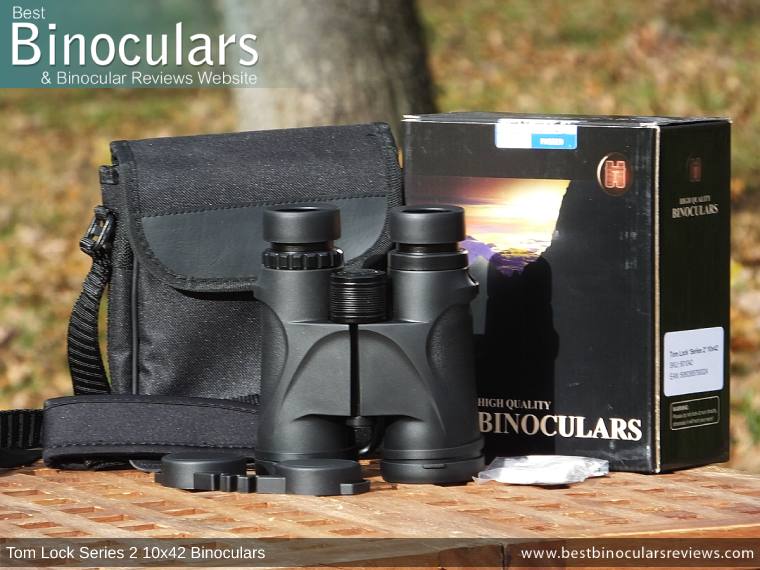
Very Cheap Binoculars
As you would expect very cheap binoculars manufactured in such a way and in locations where the production costs are kept to an absolute minimum. Labour is cheap, there is as much automation as possible and they often “buy-in” many generic parts in bulk from third parties.
Body Components & Materials Used
Wherever possible, manufacturers of low cost and cheap binoculars will use lower-cost materials and components to keep the prices down.
The table towards the bottom of this page lists most of these and contrasts it against what you get on more expensive instruments, but to give you some examples, very cheap binoculars will almost always have a plastic chassis and use many plastic body parts and components.
This will include the focus wheel, the eye-cups, and the eyepiece housings. As well as being less robust and thus more likely to break if you are to drop your instrument, the actual function of their mechanisms is usually inferior.
For example, the focus wheels on cheap binoculars often have a large amount of free play or stiff sections and the twist-up eyecups often are loose, rattle about, or don’t have enough resistance built into them to remain at your desired setting.
Not O-ring Sealed
Whilst they might be advertised as “weather-protected”, on top of having a plastic chassis, the cheapest binoculars are usually not fully-sealed and thus neither waterproof nor fog proof.
To those who don’t go out in the wet this may not sound like a big deal, but just remember that these seals also prevent tiny particles like dust from getting into the system.
The completely moistureless and oxygenless gas (either nitrogen or argon) that is used to prevent water from condensing on the internal lens surfaces also inhibits the growth of mold and fungus on the glass surfaces which is something you often see on older (usually vintage) binoculars.
Optical Glass & Coatings
In terms of the optics, the glass that low-cost binoculars use for the lenses and prisms are of lesser quality and as such has a higher bubble count and more imperfections than that of the higher-quality (and more expensive) optical glass used on more expensive binoculars.
As well as this, the glass they use will have very few (if any) of the special optical coatings that are used on higher-end instruments.
These different coatings are very important and help in many ways to improve the view by doing things like increasing light transmission and decreasing distortions.
They will also lack further coatings on the exterior lens surfaces designed to protect them from scratching, water and oil.
Image Quality
The combination of the lower quality glass and fewer optical coatings usually results in an image that observably less sharp, less bright, with colors that can seem muted or washed out, and very often has a larger area of softening around the edges of the view.
You will also almost always have more color fringing around the edges of objects in the view.
I have also noticed that the view through the cheapest binoculars also often has a slight tint to it (often yellowish) and is more likely to show other kinds of distortion or curvature of the image.
So whilst yes, a cheap binocular will certainly magnify the image, but in the worst cases, the level of detail and the accuracy of the color reproduction is greatly diminished. For some uses where detail and color are important (like birdwatching), these drawbacks can be extremely important as they can lead to false identifications.
Beware of Gimmicks
Cheap binoculars will often use a perceived or exaggerated “feature” to try and help them sell.
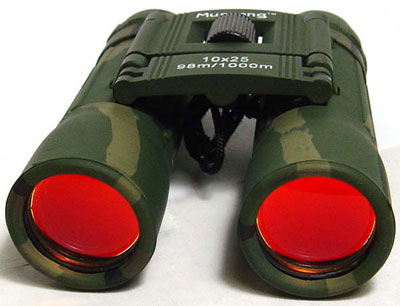 Good examples of this are binoculars advertised as having “night vision” or with ruby coatings on the lenses that were made popular in movies like “The Terminator” and thus make them look cool!
Good examples of this are binoculars advertised as having “night vision” or with ruby coatings on the lenses that were made popular in movies like “The Terminator” and thus make them look cool!
Described by many somewhat ignorant sellers on sites like Amazon and eBay as “night vision binoculars”, these coatings are actually supposed to filter red from the color spectrum.
This by no stretch of the imagination helps with night vision or even improves low light performance, but it can make it seem like they have eliminated color aberrations from the view. However, without red in the image, the view they do produce also usually looks unnatural and washed out and in my opinion should be avoided.
Not All Cheap Binoculars are Bad
So by now, you are probably thinking that I am totally against ALL low-cost and cheap binoculars and that you should only buy an expensive pair!
This is most certainly not the case, and whilst I generally suggest avoiding the very cheapest binoculars, I just feel that it is important to understand their limitations and thus make a more informed decision based on more than just price.
Cheap Binoculars: Porro vs Roof Prism
If you are on a very tight budget, you need to be more careful when choosing which one to buy, to make sure you get one of the few good ones, hidden amongst the thousands of really bad ones!
In many cases, you are probably better off choosing a porro prism binocular as opposed to a roof prism design (especially if the size of your instrument is not a major factor).
For some recommendations, take a look at my page on the best binoculars for under £200 ($200) and my guide to The Best Value for Money Binoculars which highlights my top recommendations within all the different price ranges.
Expensive Binoculars
On the other end of the scale, higher spec, more expensive optics are built to much higher, more exacting standards, by more highly skilled technicians, using the latest technologies and using only the finest quality materials and components:
Components & Materials Used
High-end, expensive binoculars are made using much better quality materials, components and with more precise tolerances to produce a much better user experience.
For example, gone are the plastic chassis, focus wheels and eyepieces. Instead, a good quality expensive binocular will have a magnesium chassis and all-metal components.
No doubt these are more robust, but on top of this, the actual workings of things like the focusing and twist-up eyepiece mechanisms will just work better. They are smoother, without any free play or stiff points and thus more precise.
Optical Glass & Coatings
In terms of the optics, a high-end binocular will use glass that is better quality, with fewer imperfections, than that used on cheap instruments. This glass is then polished to a much better level, with more exacting and tighter tolerances, by highly experienced technicians using state-of-the-art machinery.
Then they take this glass and add a whole host of special coatings to the lenses and the prisms which have the effect of increasing the levels of light transmission, reducing aberrations and distortions as well as providing a layer of protection to the outer surfaces.
Are you Sure?
How do I know all this for sure, maybe it is just marketing hype?
Well, there are, of course, many excellent marketers in this industry that will insist that they have the latest and best thing since sliced bread and you have to see past them and claims that seem too good to be true. But all of the features I have described above are real and do make a difference.
How do I know?
I have seen much of it for myself: I have tested and reviewed many hundreds of binoculars, spanning all the price ranges and whilst I will be the first to admit I don’t know everything (far from it), I have a decent amount of experience and can generally separate B.S. claims from what is real.
As well as this, I recently visited the Steiner factory in Germany where they very kindly took me through the entire process: So right from the start when they take the rough unpolished glass lenses and prisms (which they get from either Hoya in Japan or Schott in Germany), right to the end where they are fitted and then very thoroughly tested in a binocular housing, to the product finally being packaged and made ready for distribution and sale.
It was really, very impressive, and you can read more about my Steiner Factory visit here, but what really struck me was just how many steps there are in the process and just how much work goes into every single one of them.
The exacting attention to every single detail and the number of quality checks that every single Steiner binocular goes though blew me away. From polishers to ovens, grinders to pressure chambers, there was a lot of very specialist and impressive looking machinery, but at the same time, this was by no means an automated factory.
At every step, there were highly skilled workers, many of whom have been working for Steiner for many years and in some cases for a couple of generations.
It became obvious to me that all of this specialist equipment, quality materials and highly skilled labour does not come cheap and as such their instruments are never going to be able to compete in terms of price against mass-produced binoculars made from inferior materials and in parts of the world where labour is cheap. But what you can be sure of is receiving a precision instrument of a very high quality.
All in the name?
It is true that at the very top-end for some of the biggest, ‘alpha’ level brands like Swarovski, Leica, and Zeiss, as well as the quality, you are also paying a premium, for the name, their prestige and their long and distinguished history within the world of optics.
This can be a double-edged sword as on the one hand, you are buying into a brand that assures you a certain level of quality and workmanship that you can count on and be proud of. But on the other hand, you do have to pay for the privilege of joining their “club” and becoming part of their community.
Accessories
One of the more obvious differences between low-cost and cheap binoculars versus expensive and even mid to high-level instruments is in the quality of the extras and included accessories.
This includes the packaging, the carry case, neck strap, lens covers, rain guard, cleaning cloth and sometimes things like an included bino harness:
Packaging
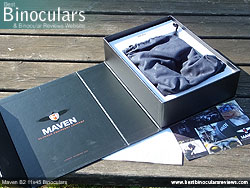 Cheap binoculars often arrive on my desk in simple boxes without any sort of branding or indication of the exact model or configuration of binocular contained within. These generic, mass-produced boxes are used by many companies selling cheap binoculars.
Cheap binoculars often arrive on my desk in simple boxes without any sort of branding or indication of the exact model or configuration of binocular contained within. These generic, mass-produced boxes are used by many companies selling cheap binoculars.
High-end and expensive binoculars on the other hand often come with elaborate packaging that not only offers the instrument much more protection but almost acts as a display case for it – A good example is the Maven B2 11x45 binoculars (pictured right).
Lens Covers
Low cost and cheap binoculars either don’t have any or their lens covers are unmarked, very generic and used on many instruments from a host of different brands.
The soft plastic that they are made from is also much more lightweight and can break quite easily, especially at weak areas like the crease there the cups join onto the tether ring that goes around the barrels.
In sharp contrast to this, the lens covers on high-end instruments are often specifically designed for this particular brand and indeed this specific configuration.
As such they often contain the logo of the brand, fit into the ends of the barrels instead of over them and in general look much more a part of the instrument instead of being just an afterthought. Because of this, they usually fit better and thus less likely to come away by accident.
As well as this they are usually made out of thicker, much tougher soft rubber that is no doubt longer-lasting and less likely to break at the crease.
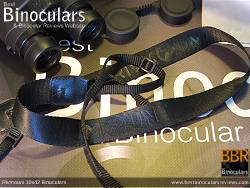 Neck Strap
Neck Strap
One of the biggest differences is between the neck-straps suppled with cheap vs expensive binoculars.
The generic, very lightweight, completely un-padded straps are no match for the individually branded, high quality, well-padded neck-straps that usually comes with a high-end instrument.
As well as this these high-end straps often have a number of design features that set them apart even further:
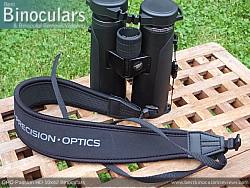 For example, as well as being better padded, they are curved to better fit around your neck and shoulders and then on the underside they have a grippy surface to prevent them from slipping from side to side as you walk.
For example, as well as being better padded, they are curved to better fit around your neck and shoulders and then on the underside they have a grippy surface to prevent them from slipping from side to side as you walk.
The connectors are usually far more robust and less likely to break and they often have quick release clips making them easier to take on and off or swap out allowing you to attach the binocular more easily to a harness.
A good example (pictured right) is the strap that comes with the GPO Passion HD 10x42 Binoculars.
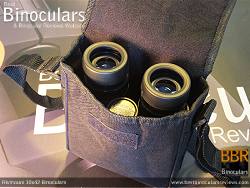 Carry Case
Carry Case
Once again the average carry case supplied with a cheap binocular is generic, unbranded, made from very lightweight material and with little, if any extra padding inside.
As cheap cases are not specifically made for the particular instrument, the binoculars also often don’t fit very well and either just flop about, or you have to twist down the eye-cups to close the lid. (see the example right).
On the other end of the spectrum, the best binocular often have cases specifically designed for the particular brand and model of instrument, which results in a better fit.
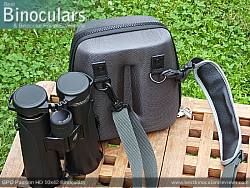 So enough space to easily replace and take out the binocular, but snug enough so that they don’t flop about inside.
So enough space to easily replace and take out the binocular, but snug enough so that they don’t flop about inside.
They are often of a semi-rigid design and/or have a lot of protective padding inside and you generally get extra pockets and an adjustable carry strap.
A good example of a high end case is once again the one supplied with the GPO Passion HD 10x42 binoculars (pictured right).
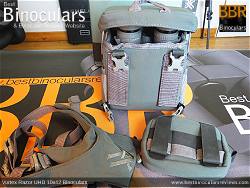 Extra Surprises
Extra Surprises
On top of this, you sometimes find extra accessories being included on more expensive instruments.
For example, the carry case for the Vortex Razor UHD binoculars doubles as a Bino Harness and comes with the straps included.
You also get an extra accessory pouch designed to fit onto the front of the case, your belt, backpack or anywhere where you have webbing.
Comparison Table: Very Cheap to Very Expensive Binoculars
Right, now let us take a look what features you can expect to find on binoculars at different price ranges:
| Very Cheap | Low Cost | Mid – High Priced | High End & Premium | |
| Approx Cost | Under $50/£50 | $50 – $130 / £50 – £130 | $130 – $500 / £130 – £500 | Over $500 / £500 |
| Prism Glass | Bk-7 | Bak-4 | Bak-4 | Bak-4 or better like SK15 |
| High-Reflective Prism Coatings | None or maybe Aluminum Mirror Coating | Aluminum or Enhanced Aluminium Mirror Coating | Silver Mirror Coating to Dielectric Coating | Mostly Dielectric Coating |
| Phase Correction Coatings (Roof Prism) | Never | Not Often | Yes, but not always | Yes |
| Lens Design | Usually Achromatic | Usually Achromatic | Usually Achromatic | Achromatic or Apochromatic |
| Anti-Reflection Lens Coatings | None or just Coated | Coated to Multi-Coated | Multi-Coated to Fully Multi-Coated | Fully Multi-Coated |
| Oil & Water Repellent Lens Coatings | Never | Never | A Few | Quite Often |
| Ant-Scratch Lens Coatings | Never | Never | A Few | Quite Often |
| ED Glass Elements | Never | No | Sometimes | Most Often |
| Waterproof | Almost Never | Not Always | Almost Always | Yes |
| Fogproof | Almost Never | Not Always | Almost Always | Yes |
| Carry Bag Quality | Poor | Poor to Good | Good to Excellent | Mostly Excellent |
| Neck Strap Quality | Poor | Poor to Good | Good to Excellent | Mostly Excellent |
| Typical Build Quality | Poor | Poor to Good | Good to Excellent | Excellent |
| Toughness & Durability | Most Often Bad | Bad to Good | Good to Excellent | Usually Excellent |
| Typical Image Quality | Bad to OK | OK to Good | Good to Excellent | Excellent |
| Typical Value for Money | Mostly Bad | Bad to Good | Good to Excellent | Poor to Excellent |
Diminishing Returns
With binoculars, it is most certainly the case of the higher up you go, the more and more you have to spend to get ever smaller improvements.
Build Quality & Components
So for example, if I were to compare an average binocular costing around $50 – $75 versus one at about $150, I would say that in general and in most areas, the more expensive pair would probably be just about twice as good in terms of the build quality and materials used.
However, whilst there will be improvements, a premium $1500 pair is unlikely to be twice as good as a high-end binocular costing $750.
Image Quality
As for the quality of the image, this is where it gets even more complicated!
There is no doubt that the image you are presented with when looking through the premium level, $1500 pair of binoculars is stunning and much, much better than a $50, $75 or even $150 instrument. But I wouldn’t say it was 10x to 30x better.
In terms of the image quality, the best cheap binoculars that I have used can just about hold their own versus an average mid-level instrument with the same configuration.
Whilst very good mid-level binoculars can compare with an average high-end instrument.
Then there are several high-end binoculars (usually around the $900 to $1100 mark) that I have tested and which to my eyes do produce an image that is as near as it gets to matching the very best ‘alpha’ level instruments. But as we have mentioned, they don’t come with the included prestige and history.
For a list of the binoculars I am referring to in all of these price ranges, take a look at my guide to The Best Value for Money Binoculars.
Best Value for Money
The best value for money binoculars are, in my definition of the term, the ones that are built well, contain as many of the best quality components and coatings as possible and produce a high-quality image, but at the same time cost as little as possible.
Cheap vs Expensive
Whilst there are a few exceptions, this generally means that cheap does not equate to good value as you do need to spend a certain amount of money to get more “bang for your buck” and very cheap binos don’t usually have enough “quality” within them to produce a long-lasting product or a good quality image.
On the other hand, some very expensive binoculars use all the best bits and produce an outstanding image, but charge a lot for their name. So whilst they may be the very best binoculars, they are not always what I would consider being the best value for money.
I have found that for the most part, you can get a very good value binocular with many of the good bits, which will produce a good to a very good image from around $250.
Good Examples
The binoculars below all use coatings and components that are as good or better than the typical examples within their price range from the table above and so are in my opinion good value for money within their respective price brackets:
| Very Cheap | Low Cost | Low Cost | Mid Priced | Mid – High Priced | High End | High End | Premium | Premium | |
 |
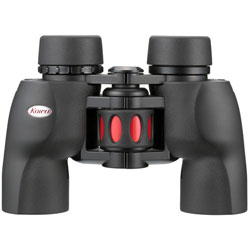 |
 |
 |
 |
 |
 |
 |
 |
|
| Pentax UCF R 8x21 | Kowa 8x30 YF | Carson RD Series 8x42 | Celestron TrailSeeker ED 8x42 | Hawke Frontier ED X 8x32 | Snypex Knight D-ED 8x32 | GPO Passion HD 10x42 | Vortex 8x42 Razor HD | Swarovski EL 8.5x42 | |
| Approx Cost | Under $50/£50 | $150 / £150 | $150 / £200 | $280 / £200 | $380 / £380 | $549 | $900 / £900 | $1100 | $1990 / £1800 |
| Prism Glass | Bk-4 | Bak-4 | Bak-4 | Bak-4 | Bak-4 | Bak-4 | Bak-4 | Bak-4 | Bak-4 |
| High Reflection Prism Coatings | Not Needed | Not Needed | Silver | Dielectric Mirror Coating | Dielectric Mirror Coating | Dielectric Coating | Dielectric Coating | Dielectric Coating | Dielectric Coating |
| Lens Design | Think Achromatic | Think Achromatic | Think Achromatic | Achromatic? | Achromatic? | Apochromatic (APO) | Achromatic? | Apochromatic (APO) | Apochromatic? |
| Phase Correction Coatings (Roof Prism) | Not Needed | Not Needed | No | Yes | Yes | Yes | Yes | Yes | Yes |
| Anti-Reflection Lens Coatings | Multi-Coated | Fully Multi-Coated | Fully Multi-Coated | Fully Multi-Coated | Fully Multi-Coated | Fully Multi-Coated | Fully Multi-Coated | Fully Multi-Coated | Fully Multi-Coated |
| Oil & Water Repellent Lens Coatings | No | No | No | No | Yes | Yes | Yes | Yes | Yes |
| Ant-Scratch Lens Coatings | No | No | No | No | No | No | No | Yes | Yes |
| ED Glass Elements | No | No | No | Yes | Yes | Yes | Yes | Yes | Yes |
| Chassis Material | Polycarbonate | Polycarbonate | Polycarbonate | Magnesium | Magnesium | Magnesium | Magnesium | Magnesium | Magnesium |
| Waterproof | No | Yes | Yes | Yes | Yes | Yes | Yes | Yes | Yes |
| Fogproof | No | Yes | Yes | Yes | Yes | Yes | Yes | Yes | Yes |
| Carry Bag Quality | OK | Good | Good | Very Good | Excellent | Excellent | Excellent | Excellent | Outstanding |
| Neck Strap Quality | OK | Good | Good | Very Good | Very Good | Excellent | Excellent | Excellent | Outstanding |
| Build Quality | Good | Good | Good | Very Good | Excellent | Excellent | Excellent | Excellent | Outstanding |
| Toughness & Durability | OK | Good | Good | Excellent | Excellent | Excellent | Excellent | Excellent | Excellent |
| Image Quality | OK | Very Good | Very Good | Very Good | Excellent | Excellent | Excellent | Excellent | Outstanding |
| Value for Money | OK | Good | Good | Excellent | Excellent | Very Good – Excellent | Very Good – Excellent | Very Good | Good |
For more examples, take a look at my guide to:
Other Alternatives
 Low Cost
Low Cost
For some more ideas, take a look my page on the best binoculars for under £200 ($200) which contains my selection of some of the best bins that I have reviewed within this price range.
On this page also find some full-sized bins, including the great value for money Vanguard Spirit XF 10x42 and the excellent Hawke Nature-Trek 8x42 Binoculars.
These and other full-sized binos generally offer a better performance than a compact, but with the obvious trade-off being the extra size and weight you have to carry.
Mid – High Priced
Also take a look at my article on the Best ED Binoculars for under $350 / £350.
 High End
High End
Winner of the award for the Best Safari & Travel Binocular in 2018, I have nothing but good things to say about the superb Snypex Knight D-ED 8x32. Highlights include a fully multi-coated optical system with an APO objective lens design with ED glass elements, phase corrected BaK-4 roof prisms with the very best dielectric mirror coatings added to them.
The body is as you would expect both water and fog proof and I really liked using the all-metal focus wheel whilst testing them and the focus mechanism was both smooth and precise. So whilst not cheap, I do think that for a high-end binocular, they offer really good value for money. Highly Recommended.
 Premium
Premium
As well as the Vortex Razor listed above, I also highly recommend their newer version, the Vortex Razor UHD 10x42 Binoculars as well as the 8x30 Swarovski CL Companion if you are looking for an extremely high quality semi-compact from one of the most respected names in optics.
At this premium level, and especially for a top European brand like Swarovski, you are always going to pay some sort of a premium for the name, but then you are also guaranteed an extremely high-level when it comes to the workmanship, coatings and optical components that are used.
 Do you have a question?
Do you have a question?
If you are confused as to which binocular is right for you and your needs, or just what to know about a particular feature or aspect on a pair of bins, then I would love to try and answer it for you: ask your question here.

 Article | Posted by Best Binocular Reviews
Article | Posted by Best Binocular Reviews 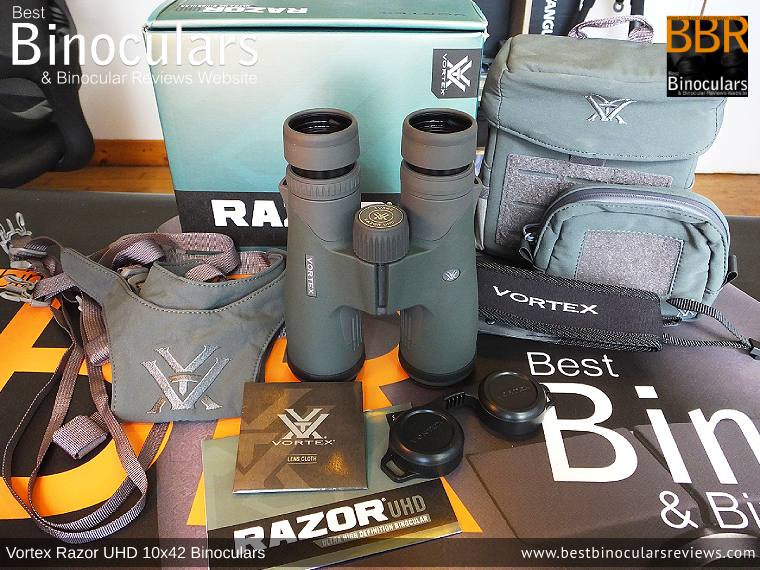
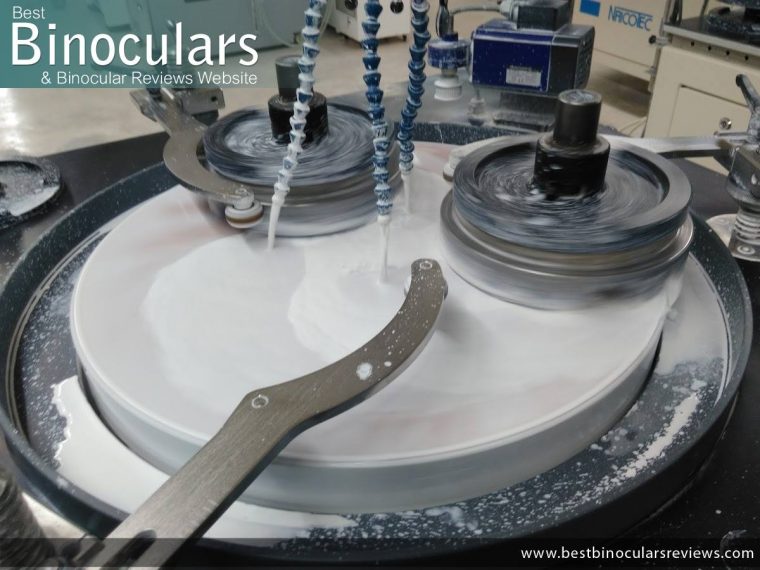
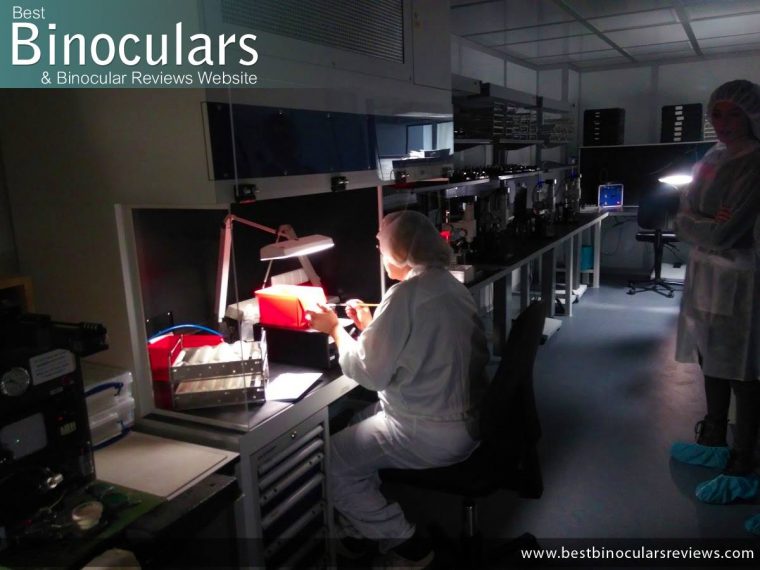
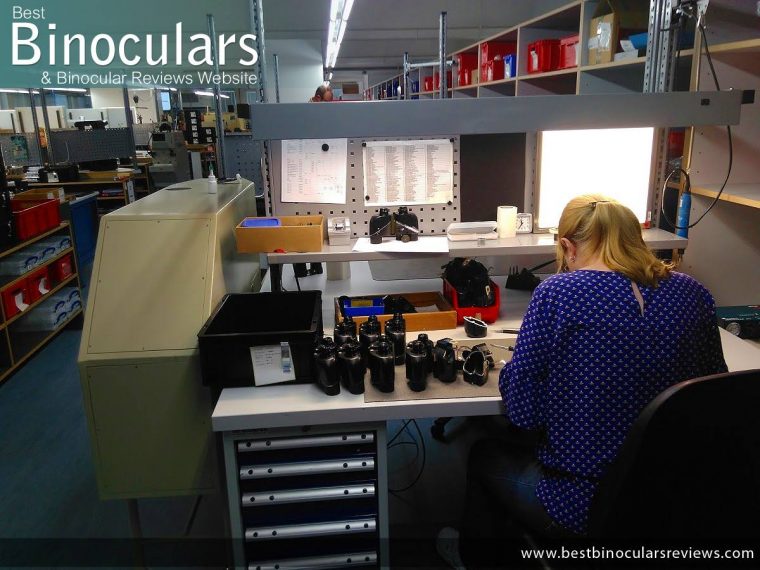

 Categories:
Categories:  Tags:
Tags: 

[…] can read my full article and watch the video that goes through the main differences between cheap vs expensive binoculars in more detail here. I hope this helps, please let me know if you need further […]